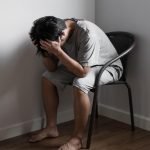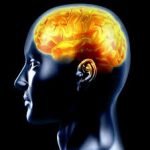Category: Mental Illness

By Chris J. Tuell, EdD, LPCC-S, LICDC-CS
Lindner Center of HOPE, Clinical Director of Addiction Services; Assistant Professor, Department of Psychiatry & Behavioral Neuroscience
University of Cincinnati College of Medicine
At the end of the Vietnam War in 1975, 1 out of 5 soldiers (20%), returning to the United States from Southeast Asia, was addicted to heroin. It was estimated that approximately 100,000 American soldiers would be returning home, addicted to this destructive drug. Experts projected a drug epidemic, which would destroy countless lives and communities. It never happened.
Once soldiers returned home to families, friends and communities, the destructive nature of a hardcore drug, like heroin, failed to materialize. In fact, 95% of the soldiers who were once addicted to heroin, stopped using the drug almost immediately once they returned home.
For many years, our understanding of addiction was based on early research conducted in the first half of the 20th century. These studies involved rats and consisted of placing a rat in a solitary cage, providing the rat with a choice of water: plain water or water laced with cocaine or heroin. The study found that all the rats preferred the drug-laced water to the plain water. All the rats overdosed on the drug. The majority of the rats died in the study. This became our model of addiction for many years. The accepted belief became, if you are exposed to a drug, you will become addicted, and you may overdose and die.
Several years later, this original study was replicated, but with a significant difference. Researcher Bruce Alexander from the University of Vancouver, created, what was referred to as: a “rat park.” This park consisted of tunnels, multiple levels, toys, and other rat companions. Similar to the original study, all rats were given the same choice of water: plain water or water laced with heroin or cocaine. In Alexander’s study, rats preferred the plain water. Rates of overdose and death to the rats were significantly lower when compared to the initial study. How do we explain this difference in results? Perhaps, it is about the cage. Perhaps, it is about the environment.
Upon their return home, the soldiers from Vietnam who were struggling with a heroin addiction were able to re-connect with loved ones and community. A change in environment allowed for a change in connection, resulting in health, wellness and sobriety. Likewise, the environment of the rat in a solitary cage, as compared to the environment of the rat park, provided the rat with a “connection” with other rats, an environment which allowed the rat…to be a rat.
Individuals, who experience issues of mental illness and/or substance use disorders, have a natural tendency to withdraw and isolate from others. Depression, anxiety and addiction, greatly affect an individual’s ability to connect with others, let alone with one’s environment. This past year we have seen the devastating impact of COVID-19. We know that in order to maintain health and wellness, we need to maintain social distance and disconnect from one another. For now, this has and continues to be, what we need to do. It remains challenging for many of us to continue to avoid contact with loved ones and friends. We are separated from the very individuals who love us, support us, and are our sources of connection.
We have seen the rise of mental health issues during the past year. Nearly 20 percent of COVID-19 patients have developed a mental health issue (i.e., depression, anxiety) within three months of their diagnosis. During the past year, 4 in 10 adults in the U.S. have reported symptoms of anxiety or depression. Within the general population, rates of mental health issues and substance use have significantly increased across the board. In addition, the disconnection that we have witnessed has fragmented our society in general by harboring increased levels of fear, anger and animosity towards one another.
Hope on the horizon
Once “herd immunity” is achieved, the importance of re-connecting with one another becomes vital and essential to our health and mental wellness. We are social beings and need connection with one another. History has shown that the mental health impact of disasters outlasts the physical impact, suggesting today’s elevated mental health needs will continue well beyond the coronavirus outbreak. Like the moth that needs to struggle out of the cocoon in order to develop the strength that it needs to survive in the world, we too are developing the strength that we need from the struggles we have endured. Re-connecting with one another is an answer. It gives us strength and it gives us hope.




 Nicole Bosse, PsyD
Nicole Bosse, PsyD


 Danielle J. Johnson, MD, FAPA Lindner Center of HOPE, Chief Medical Officer
Danielle J. Johnson, MD, FAPA Lindner Center of HOPE, Chief Medical Officer
 By Allison Mecca, PsyD
By Allison Mecca, PsyD



